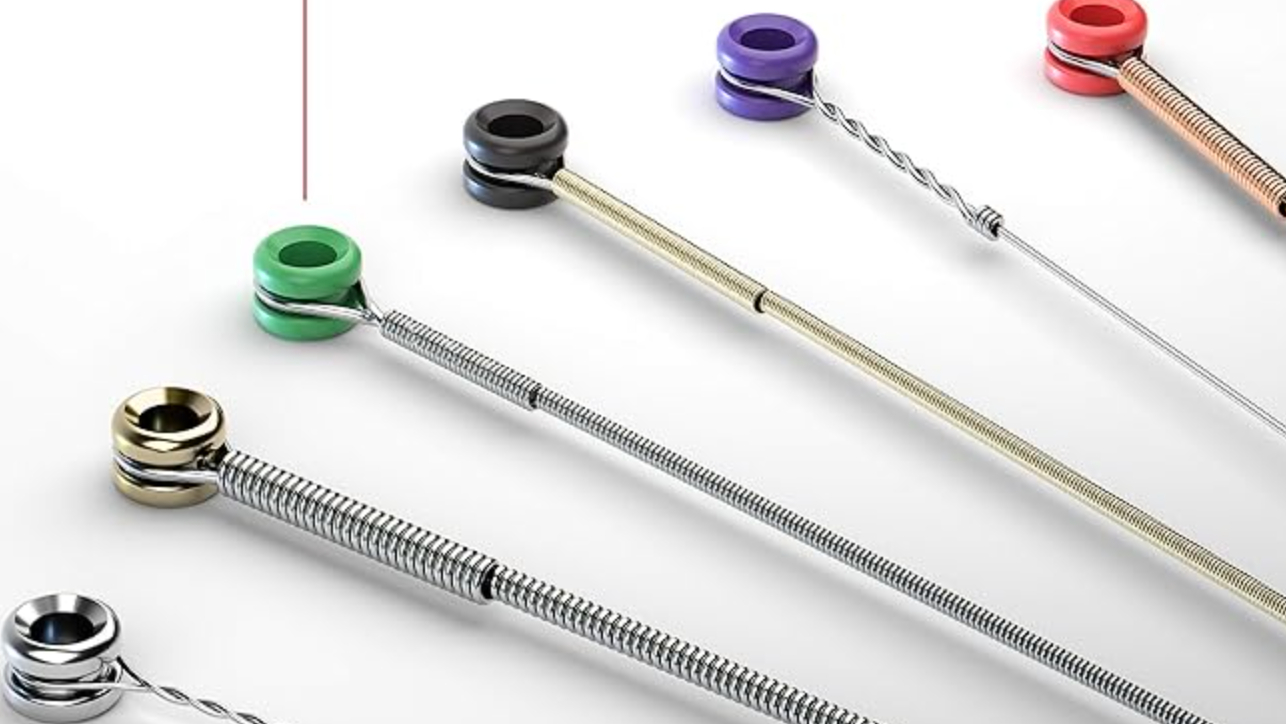"My daughter said, that's really criminal, you're putting so much junk in the waste-stream": Jim D’Addario reveals the real reason why guitar strings are colour coded
It’s to cut down on packaging, apparently

They say you learn a new thing every day. So here’s yours for today: have you ever wondered why guitar strings are colour-coded? Not really? Anyway, in a recent interview with Billboard, D’ Addario CEO Jim D’Addario has revealed the real reason – and there’s an environmental friendly premise behind it.
"In the early 1990s, a package of strings had an envelope for each of the six strings," Jim recalled. "A paper envelope for each one, identified for each note, in a vinyl pouch with a fancy label. So there was a minimum of eight pieces of packaging."
"Sometimes there was a little advertisement as well," he added. While, a guitar string package might look just like any other, the secrets are on the inside. As D’Addario explained, cutting down on all the unnecessary waste was actually an idea that originated from his daughter.
"My daughter Amy was in high school, and they were studying environmental friendliness and recycling and packaging, and I was changing my strings on the bed and I had all this garbage when I was done. She said, 'You should really do something about that, that's really criminal, you're putting so much junk in the waste-stream just to change a set of strings.’”
So what has this got to do with the colour-coding on the ball end? Well, D’Addario came up with an ingenious ploy: "I came up with a system of colour-coding the ball end on the string a different colour, then coiling those together in one corrosion-resistant plastic bag and having them colour-coded, so the silver one is this note, and the brass one is this note."
In Jim’s estimation, his scheme eliminated around 75% of the packaging. Multiply that by all the thousands of string packages that are sold around the world every day and you have cut out a hell of a lot unwanted packaging waste. Amy D’Addario was doubtless very proud of her dad.
So now you know.
Get the MusicRadar Newsletter
Want all the hottest music and gear news, reviews, deals, features and more, direct to your inbox? Sign up here.

Will Simpson is a freelance music expert whose work has appeared in Classic Rock, Classic Pop, Guitarist and Total Guitar magazine. He is the author of 'Freedom Through Football: Inside Britain's Most Intrepid Sports Club' and his second book 'An American Cricket Odyssey' is due out in 2025
"That's what it takes to make music that's gonna last forever": Olivia Rodrigo and Chappell Roan producer Daniel Nigro on crafting timeless tracks
“A fully playable electro-mechanical synth voice that tracks the pitch of your playing in real time”: Gamechanger Audio unveils the Motor Pedal – a real synth pedal with a “multi-modal gas pedal”
“It was the first rock monster that we'd created”: How an explosive 2001 switch-up revealed just how ferocious Muse could get




![PRS Archon Classic and Mark Tremonti MT 15 v2: the newly redesigned tube amps offer a host of new features and tones, with the Alter Bridge guitarist's new lunchbox head [right] featuring the Overdrive channel from his MT 100 head, and there's a half-power switch, too.](https://cdn.mos.cms.futurecdn.net/FD37q5pRLCQDhCpT8y94Zi.jpg)





